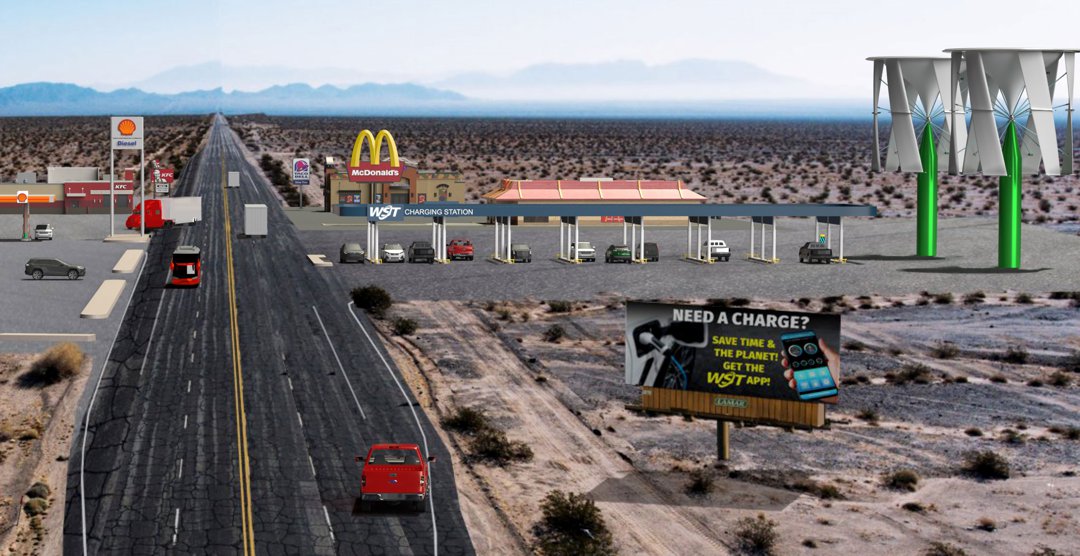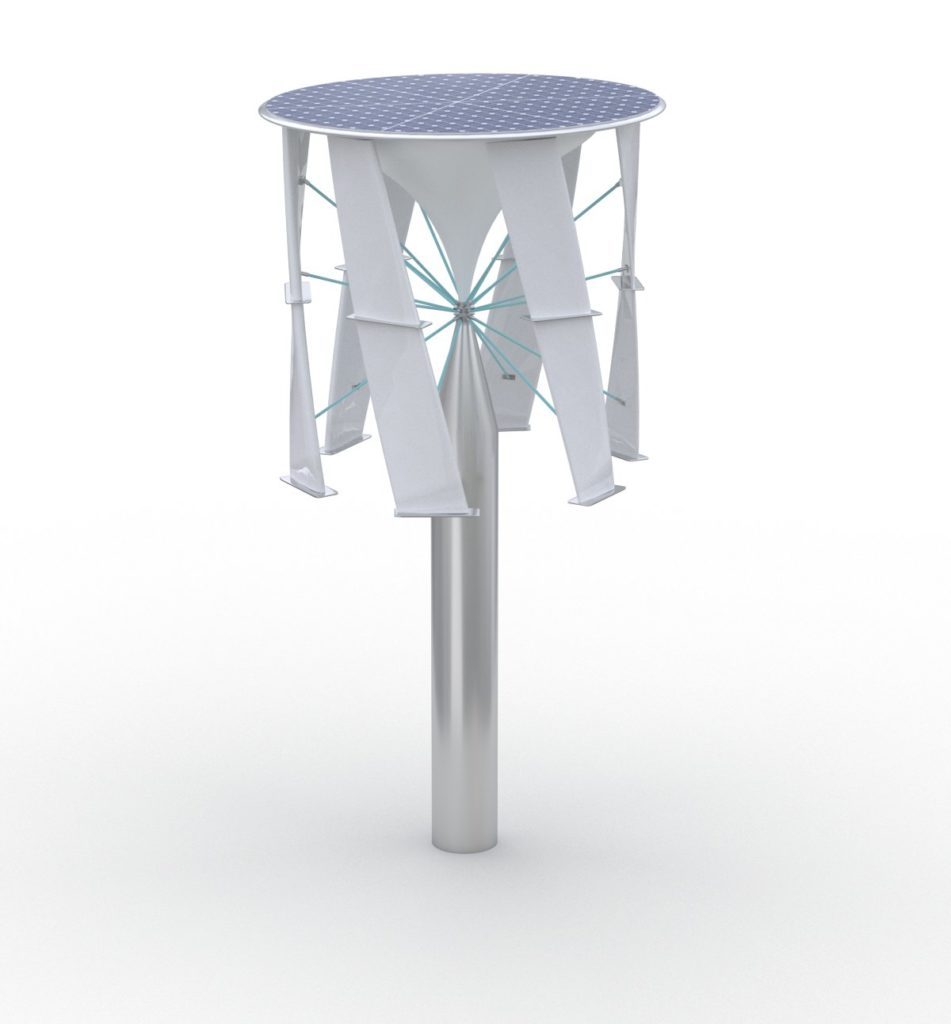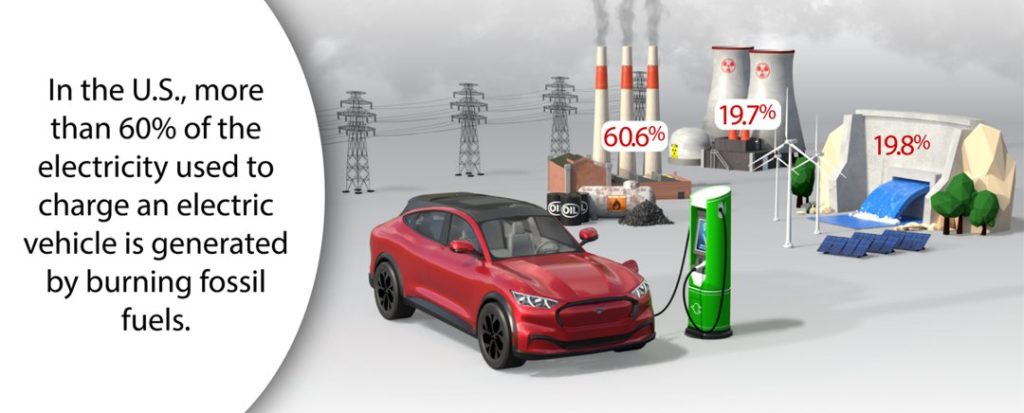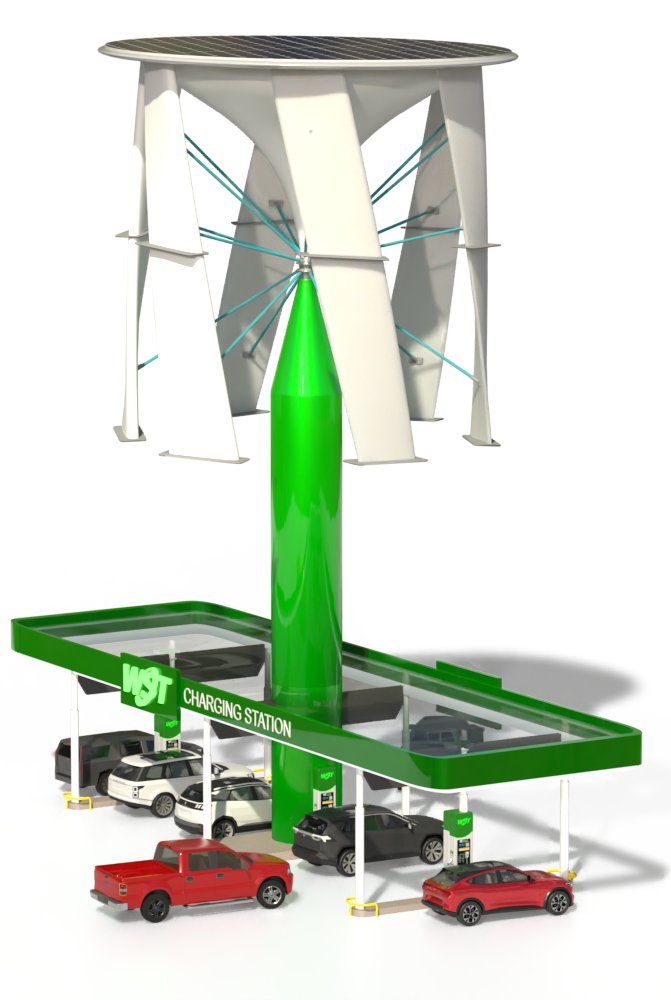A decisive moment: the U.S. grid was never designed to charge cars

NEW YORK, Feb. 23, 2022 — Change Wind Corporation has developed and validated the Wind & Solar Tower (WST), the world’s only generator that combines both wind and sun to produce pollution-free electricity for the rapidly expanding electric vehicle market.
The WST is a timely entrant as the auto industry transitions to an electric fleet with a growing realization that our electric grid was never designed to handle the power surge loads required to charge EVs.
- More than 60% of the grid’s energy is generated from coal, oil, and natural gas.
- Power plants are inefficient. According to the U.S. Department of Energy more than 60% of energy used for electricity generation is lost in conversion. In practical terms, 3 kWh worth of fuel must be burned to deliver 1 kWh to the end user.
- EV charging requires vast amounts of power over a short period of time. The power needed for a single Level-3 180-360 kW 480-volt charge is equivalent to the grid load of 50 houses during that charging time.

The WST is a timely entrant as the auto industry transitions to an electric fleet with a growing realization that our electric grid was never designed to handle the power surge loads required to charge EVs.
- More than 60% of the grid’s energy is generated from coal, oil, and natural gas.
- Power plants are inefficient. According to the U.S. Department of Energy more than 60% of energy used for electricity generation is lost in conversion. In practical terms, 3 kWh worth of fuel must be burned to deliver 1 kWh to the end user.
- EV charging requires vast amounts of power over a short period of time. The power needed for a single Level-3 180-360 kW 480-volt charge is equivalent to the grid load of 50 houses during that charging time.
In the U.S., the burgeoning EV fleet is coming without a green and expanding infrastructure to support out-of-home charging integrating anxiety-free support for electric travel.
The federal government is funding a drive to add 500,000 additional charging outlets across the country without addressing where that electricity would come from or, more importantly, if that electricity can be generated pollution free. The California Energy Commission says the state will need 1.2 million chargers (up from the 73,000) by 2030 to meet the fueling demands of the 7.5 million passenger EVs anticipated to be on California roads. This can be accomplished only if today’s electric grid can be expanded quickly and in a clean fashion.

Currently, power for the U.S. grid that is supporting EV charging stations is generated from fossil fuels (60%), nuclear (20%), and renewables (20%) that includes hydro, wind and solar. The 60 percent comprised of coal, natural gas and petroleum will need to grow as the demand to power EVs surges, thereby increasing pollution.
Yet after the U.S. successfully reduced CO2 emissions by migrating from coal to natural gas fueled electricity generation, there is now a movement to limit building more natural gas-generating plants as they release greenhouse gasses. In California, where brownouts and blackouts are common due to excessive electricity demands, the last nuclear power plants will be closed by 2025, further reducing green fuel options.
Elon Musk has said the biggest obstacle to growing the EV market is the electric grid’s inability to charge all these vehicles. According to National Renewable Energy Laboratory, electrification of transportation and other sectors will require doubling U.S. generation capacity by 2050. To make the transition to EVs a truly clean step forward, the country needs fresh solutions that are pollution-free and efficient, and offset future grid load.
Wind and solar generation today account for about 10% of the total of the U.S. electric grid. Combining those two sources in a patented device for performance and safety provides a clean solution while reducing burden on the grid.
Change Wind Corporation’s Wind & Solar Tower (WST) directly addresses this need. The power it generates is pollution free and efficiently produced on site by both wind and sun.
The WST combines a six-helical-blade wind generator with a self-cleaning solar panel and a 1,000-kWh storage battery (optional for commercial applications) that cuts electric-grid greenhouse gas emissions and additional grid load.
One Tower charges up to 8,455 EVs per year with 20-kWh fast charges of renewable power providing 600,000 miles of driving range per tower per year.
Power output specifications include:
- Solar and wind generation combined = 52.5 kW per hour
- Maximum annual solar output 65,000 kWh @ 45% duty cycle
- Maximum annual wind output 104,000 kWh @ 33% duty cycle
- Total annual output = 169,000 kWh
Key features of the WST Charging System include:
- Small footprint with dual generating systems
- 82-foot height to maximize wind capture
- Helical blades for greater efficiency
- Power generation at lower wind speeds
- Proprietary self-cleaning solar panel
- Simultaneously fast charging of up to six EVs
- Integral 100 kW battery storage

The WST will be connected to the grid to supply surplus power or to use power from the grid to charge additional EVs.
At a time when the demand for more EV charging stations is vital, more charging stations powered by pollution-free, additive electricity are required. Wind & Solar Towers represent a smart way forward in making EV travel practical and convenient.
Also on-line at https://newspressusa.com/publicReleaseView/72268
